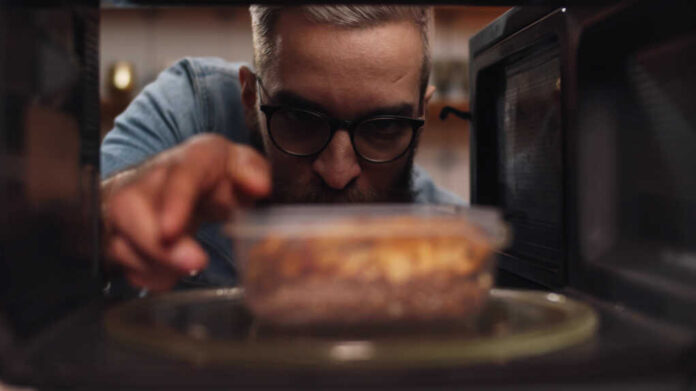
Reheating food helps cut down on food waste and makes for convenient meals during the week. It’s a budget-friendly option for meal planning.
However, it’s important to follow safety guidelines to reheat food safely and effectively.
How Many Times Can You Reheat Food Safely?
It’s best to eat food right after it’s cooked for freshness and taste. However, reheating food can be safe if done correctly. The Food Standards Agency recommends reheating food only once for safety. When reheating, ensure it’s heated thoroughly to kill bacteria. Keep in mind that each time you reheat food, its quality may decrease, especially with items like pastries. However, dishes like slow-cooked meats or stews often develop flavors when reheated.
Tips for Reheating Leftovers
Here are some easy steps to follow before reheating and eating leftovers to avoid food poisoning:
- Don’t leave leftovers at room temperature for more than two hours.
- Store leftovers in the fridge (set at 40°F or below) in a clean, airtight container. You can also freeze many leftovers (set to 0°F).
- Reheat leftovers until they reach 165°F. Use a food thermometer to ensure they’re safe to eat.
- Label leftovers with the date they were made. When in doubt, it’s better to throw them out.
Leftovers and Food Safety
Leftovers should be handled safely to avoid foodborne illness. Ensure food is cooked to a safe temperature and refrigerate leftovers promptly. Follow USDA guidelines for safe handling.
- Cook food safely at home: Cook meats like beef, pork, lamb, and veal steaks, chops, and roasts to at least 145°F. For ground meats, cook to 160°F. Poultry should reach 165°F to ensure safety.
- Keep food out of the danger zone: Bacteria thrive between 40°F and 140°F. Refrigerate leftovers within 2 hours (1 hour if it’s above 90°F outside).
- Cool food rapidly: Divide large amounts of food into shallow containers to cool them quickly. Hot food can be placed directly in the fridge or cooled in an ice bath before refrigerating.
- Wrap leftovers well: Cover leftovers tightly to keep out bacteria, retain moisture, and prevent odors from spreading.
- Store leftovers safely: Leftovers can be refrigerated for 3 to 4 days or frozen for 3 to 4 months.
- Thaw frozen leftovers safely: Thaw in the refrigerator, cold water, or microwave. Cook thawed food within 3 to 4 days.
- Reheating leftovers without thawing: You can safely reheat frozen leftovers without thawing first, but it will take longer.
- Reheat leftovers safely: Ensure leftovers reach 165°F when reheating. Bring sauces, soups, and gravies to a boil.
- Refreezing previously frozen leftovers: You can refreeze leftovers if they’ve been reheated to 165°F. If you only need a portion, thaw in the fridge and refreeze the rest without reheating.
Foods to Reheat in the Oven or Toaster Oven
Statistics show that about 1 in 6 Americans experience food poisoning each year, with 128,000 cases leading to hospitalization. In severe instances, it can even be fatal.
You can reheat certain foods in the oven or toaster oven for a tasty meal. Use low heat (about 350°F) and cover with foil to keep them moist.
Here are some foods you can reheat this way:
- Crusty bread: Warm it for 5-10 minutes for a crispy outside and soft inside.
- Baked goods: Pies, muffins, and cookies can be refreshed in the oven to avoid sogginess.
- Meats: BBQ chicken and grilled meats heat evenly in the oven without drying out.
- Seafood: Heat seafood slowly in the oven to keep it from overcooking.
- Pizza: Reheat pizza in the oven for the best results.
- Grilled sandwiches: Make leftover grilled cheese or panini crispy and warm in the oven.


















